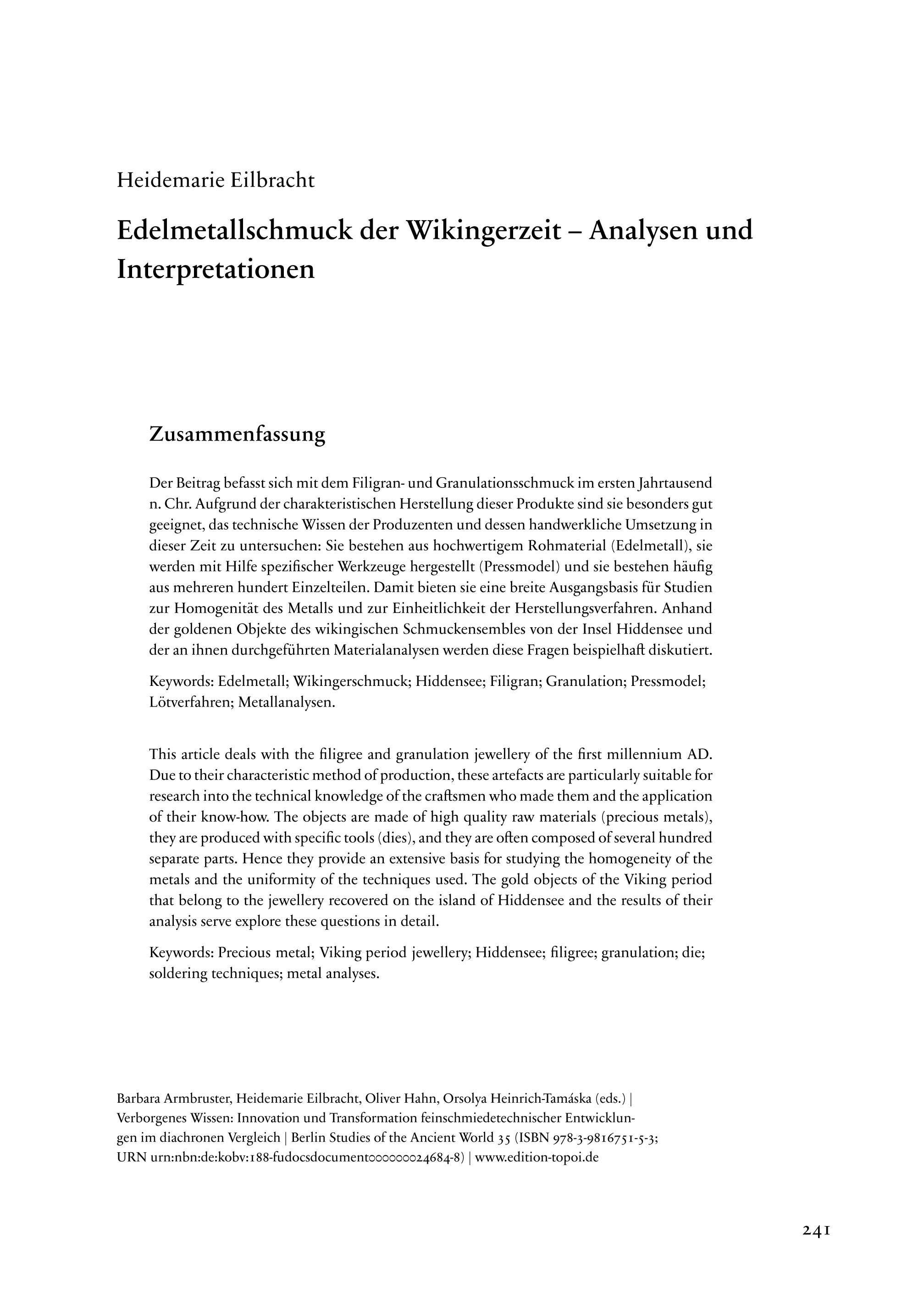Edelmetallschmuck der Wikingerzeit – Analysen und Interpretationen
This article deals with the filigree and granulation jewellery of the first millennium AD. Due to their characteristic method of production, these artefacts are particularly suitable for research into the technical knowledge of the craftsmen who made them and the application of their know-how. The objects are made of high quality raw materials (precious metals), they are produced with specific tools (dies), and they are often composed of several hundred separate parts. Hence they provide an extensive basis for studying the homogeneity of the metals and the uniformity of the techniques used. The gold objects of the Viking period that belong to the jewellery recovered on the island of Hiddensee and the results of their analysis serve explore these questions in detail.
Der Beitrag befasst sich mit dem Filigran- und Granulationsschmuck im ersten Jahrtausend n. Chr. Aufgrund der charakteristischen Herstellung dieser Produkte sind sie besonders gut geeignet, das technische Wissen der Produzenten und dessen handwerkliche Umsetzung in dieser Zeit zu untersuchen: Sie bestehen aus hochwertigem Rohmaterial (Edelmetall), sie werden mit Hilfe spezifischer Werkzeuge hergestellt (Pressmodel) und sie bestehen häufig aus mehreren hundert Einzelteilen. Damit bieten sie eine breite Ausgangsbasis für Studien zur Homogenität des Metalls und zur Einheitlichkeit der Herstellungsverfahren. Anhand der goldenen Objekte des wikingischen Schmuckensembles von der Insel Hiddensee und der an ihnen durchgeführten Materialanalysen werden diese Fragen beispielhaft diskutiert.

